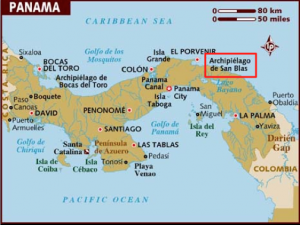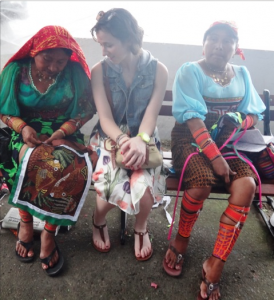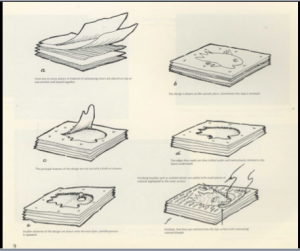Despite what my pictures may suggest, I am actually taking a class while here in Panama. The class is the International Trade and Marketing Practicum. Yes, I get three credits for laying on the beach, swimming in the Caribbean Sea and eating fish pulled fresh out of the ocean. However, we also spend entire days visiting fashion showrooms, logistics centers and talking to Free Trade Zone experts. The final project was started before we even left New York. We each got to choose our topic and then had to do some secondary research before arriving in Panama. Because I am not an ITM major, I focused more on the textiles of the traditional Panamanian culture: the mola. Luckily for me, FIT’s library has some of the best references for textiles in the world.
Molas originated in the Guna Yala region of Panama which is the archipelago of San Blas on the northeastern coast of the country. Before the invasion of the Spanish colonists, the Guna natives (also called the Kuna or Cuna) did not wear clothes and instead painted incredibly intricate and colorful figures on their bodies. Because of the similarities of reports from Lionel Wafer in 1609 it is believed that the molas were simply adaptations of the way the natives used to adorn themselves before the Spanish colonists were shocked by the nudity and required them to cover up.
Molas are made and sold by a huge number of natives who travel to Panama City to sell the wares. Girls usually learn how to sew molas at the age of six or seven. Amazingly, the tradition of the mola has survived centuries and almost all Guna women still dress in the historic way. This means that a panel is sewn as a rectangle and then sewn onto fabric that makes the chest and sleeves of a shirt.
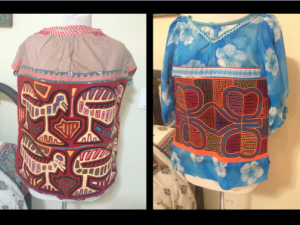
Molas are made by layering several pieces of fabric of different colors. Then, the artist will decide upon her design and carefully cut away each layer revealing the color of the layers beneath it. Then each edge is painstakingly folded under and held in place with tiny stitches.
Every mola is handmade and no two molas ever look the same. Molas can be purely geometric or figural. The imagery used in molas is not very significant to the culture. Guna women simply reflect the world they see around them in their art. Because of this fish, birds and humans are popular motifs in molas.
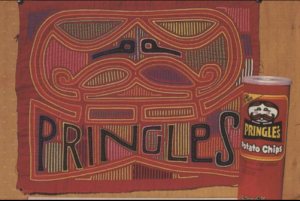
Molas are an integral and distinct part of the Guna native culture and luckily, shows no sign of dying out.
–Emily–

